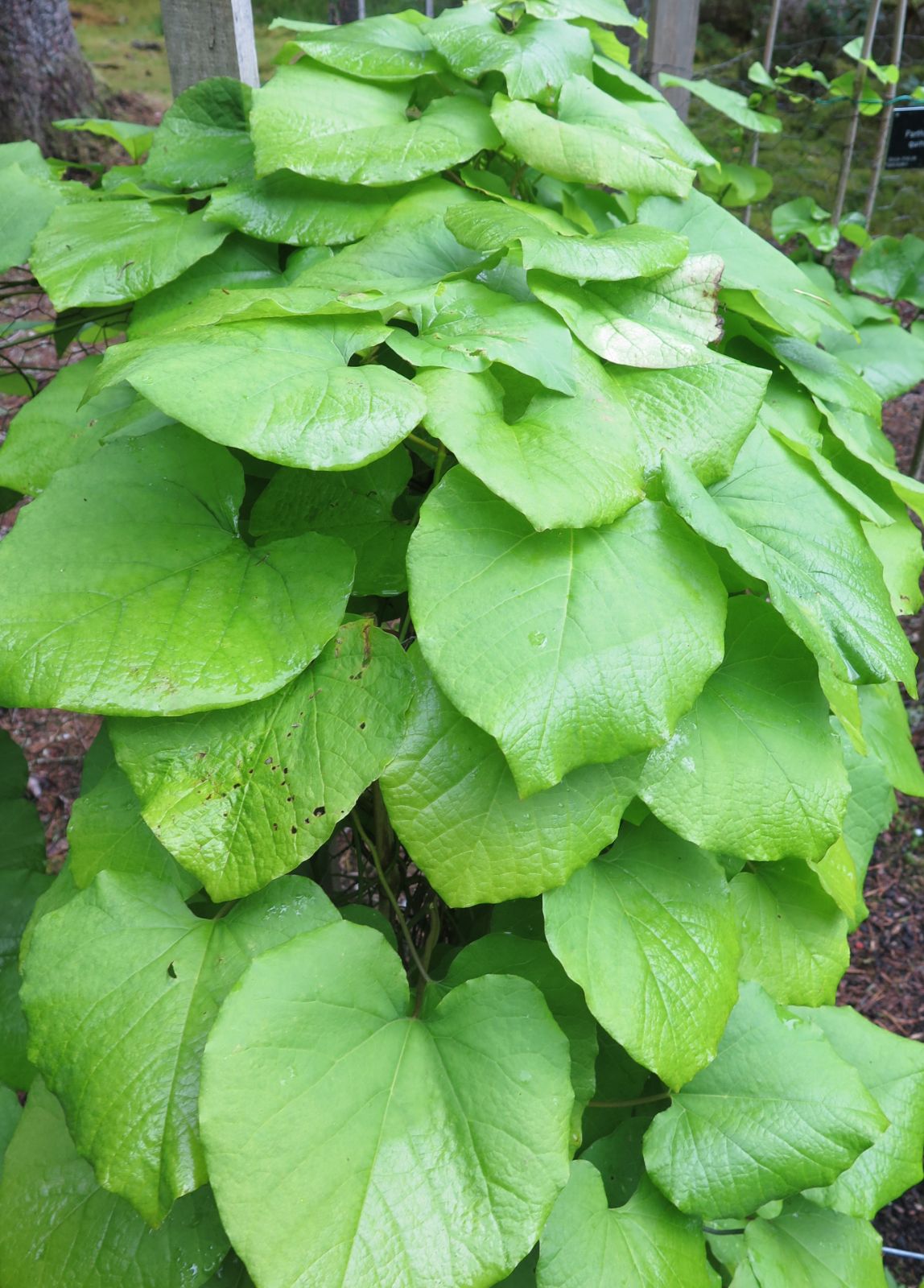Aristolochia macrophylla
Credits
Article from Bean's Trees and Shrubs Hardy in the British Isles
Recommended citation
'Aristolochia macrophylla' from the website Trees and Shrubs Online (treesandshrubsonline.
Genus
Common Names
- Dutchman's Pipe
A. durior sec. Rehd. in Journ. Arn. Arb., Vol. 3, pp. 42–3 (1921), not Hill; A. sipho L’Hérit.
A vigorous, deciduous climber, with twining stems, 20 to 30 ft high; stems smooth, buds woolly. Leaves kidney-shaped or heart-shaped, pointed or blunt, 4 to 10 in. long, often almost as wide, downy beneath when young, afterwards almost or quite glabrous, pale green; leaf-stalk 1 to 3 in. long, smooth, or slightly downy near the blade. Flowers produced in June at the joints, often in pairs, each flower solitary on a flower-stalk 2 to 4 in. long, clasped by a roundish-oval bract on the lower third of its length. Perianth 1 to 11⁄2 in. long, tubular inflated, bent like a siphon, and resembling a Dutch pipe; yellow-green outside; at the mouth the tube contracts to a small orifice, the three lobes spreading there into a flat, brown-purple border 1⁄2 to 3⁄4 in. across. Bot. Mag., t. 534.
Native of the eastern United States; sent to England first in 1783 by John Bartram of Philadelphia. This is the best-known of the genus in gardens, and is a handsome-foliaged climber; its flowers, although not highly coloured, are, like those of the other species, curiously and beautifully constructed. The plant may be used for covering pergolas, arbours, or pillars. Increased by division. The bark and more especially the root have an aromatic odour.
The late Dr Alfred Rehder thought that the plant described and figured by John Hill as A. durior might be this species but this is very doubtful and it is better to use the name A. macrophylla Lam., which antedates A. sipho L’Hérit.
From the Supplement (Vol. V)
According to Martyn, in his edition of Miller’s Dictionary, this species was introduced in 1763, by John Bartram. If, however, the date of 1783 usually given is correct, the introducer would have been John’s son William, since the father died in 1777.

